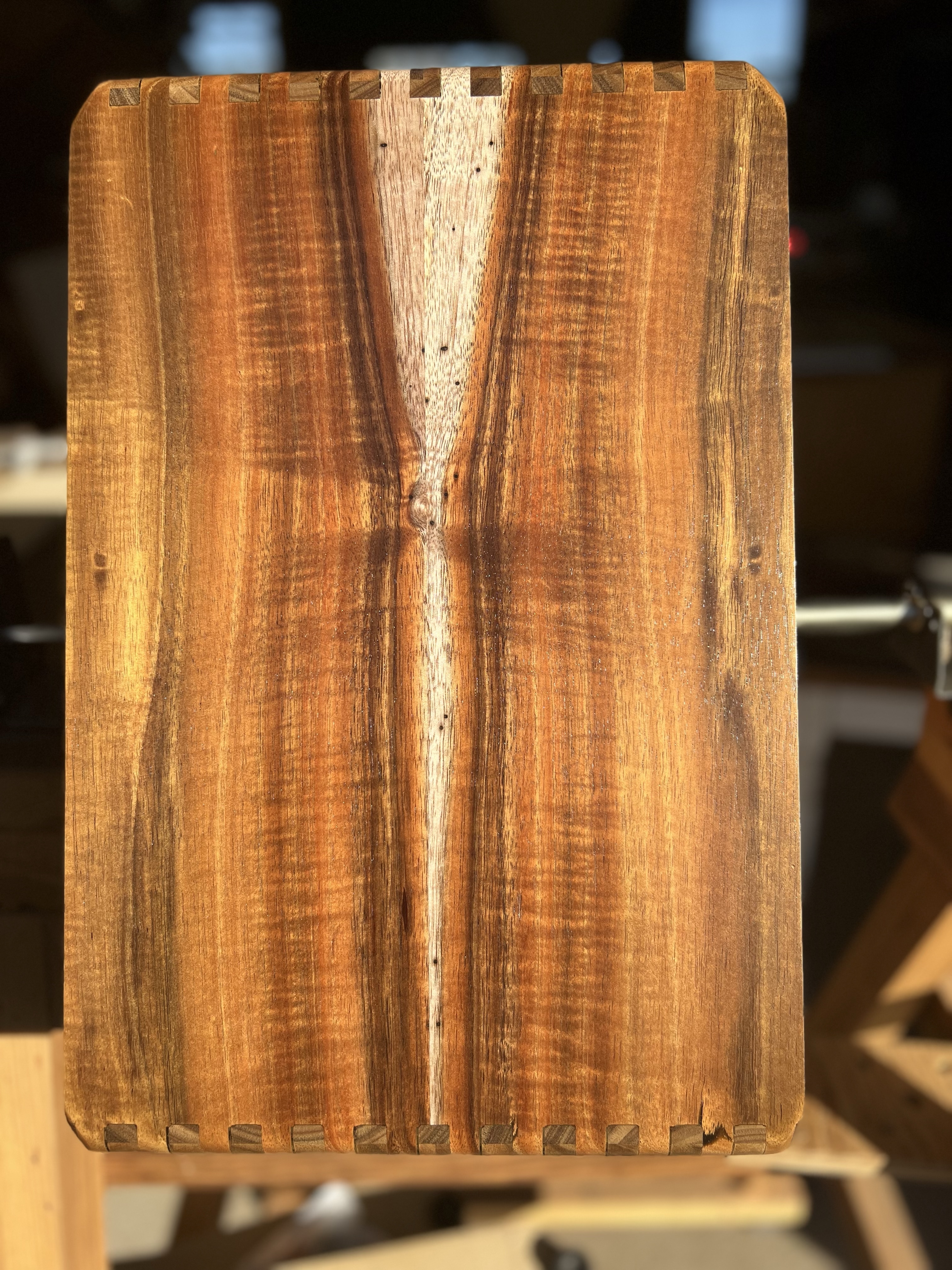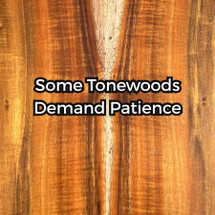Posted by Stephen Head on 27th Nov 2025
Some Tonewoods Demand Patience: A Reflection on Koa and Redwood Burl
Every once in a while as a builder, I come across a tonewood that makes me slow down without even thinking about it. That happened to me this week when I picked up some Koa and Redwood burl panels for a new cajon. I had already sanded them some and just wiped them down with Naptha to reveal the figure, that is when I found myself holding these a little longer than usual. The grain had a depth that only comes from time, and it shifted under the light in a way that made me pause before moving on to the next step.
These are not young materials. Koa takes years just to reach a size worth harvesting, and redwood burl grows on trees that have lived through more seasons than I ever will. They have experienced long cycles of rain, stretches of dry weather, cold nights, warm summers, and steady coastal mist. All of those seasons leave marks inside the grain. You can see it in the curl of the koa and in the way the burl patterns fold and twist. None of that develops quickly. It is the result of years of growth and stress working slowly over time. If you want to learn more about koa and what makes it such a special tonewood, I wrote a detailed article about its history and why it works so well for handcrafted instruments. If you want to learn more about koa and what makes it such a special tonewood, I wrote a detailed article about its history and why it works so well for handcrafted instruments: https://www.kopfpercussion.com/blog/koa-wood-history-rarity-and-why-it-makes-incredible-instruments/
When wood like this reaches the bench, it changes the pace of the work. You check the grain direction more than once. You make smaller passes with the plane or sander. You stay patient with every cut. Koa and redwood burl are stable, but they carry a structure that demands respect. They come from something that lived far longer than I have, and it does not feel right to rush a process that took decades to form.

Patience is not just a mindset here. It affects the outcome of the instrument. In a handcrafted cajon, tone comes from the balance between stiffness and flexibility in the panels. Woods like koa and redwood already have strong internal character. If you remove too much, you lose a part of what makes them special. If you take your time and shape them with intention, they reward you with a tone that is rich, clean, and responsive. A good cajon has a clear attack and a warm body, and the way you handle the wood plays a direct role in that. The more thoughtful the process, the better the instrument sounds. If you want to see the instruments I build with this same level of intention, you can find my full line of handcrafted cajons here. https://www.kopfpercussion.com/cajons/
The figure in these woods also encourages a slower approach. Every tool picks up those changes. Koa, especially curly koa, has interlocked grain that moves the light across the surface. It looks beautiful, but it can tear out easily if you push it too fast. When you stay patient, the figure becomes a strength. When you rush it, it becomes a problem.
Working with woods like these brings up a sense of respect that is practical, not sentimental. These are finite resources. Koa is limited in availability. Redwood burl is even more unpredictable and harder to source. You cannot order ten more panels that look exactly the same. Each one is unique. Each one carries its own story in the grain. That does not make it fragile or delicate. It just means you want to do right by it. You want to build something that honors the time it took to reach this point.
Most builders know that feeling. Some woods let you work quickly and stay efficient. Others make you slow down and pay attention. Neither one is better. They simply ask for different things. For me, koa and redwood burl fall firmly into the second category. They carry decades of weather and light inside them. They remind me to match that time with patience of my own.
Building cajons by hand has always been a process built on patience. Jointing panels, glue up, shaping ports, sanding, sealing all have their own rhythm. Nothing is rushed. When rare tonewoods come into play, the rhythm becomes even more intentional. You measure twice. You listen carefully to the tap tones. You move through each step with steady hands. Every bit of that attention becomes part of the final sound.
My job as a builder is not to force the wood into something it is not. My job is to bring out what is already there. The grain guides the direction. The figure shows how the light will move across the surface. The density and stiffness shape the tone. The wood leads and I follow. That mindset has stayed with me through every instrument I have built.
In the end, patience is simply part of the craft. Not because it sounds poetic, but because it is practical and true. Time in the wood deserves time from the me. When I hold koa and redwood burl, that is what comes to mind. These woods lived through more seasons than I ever will. The least I can do is slow down and build with intention.

